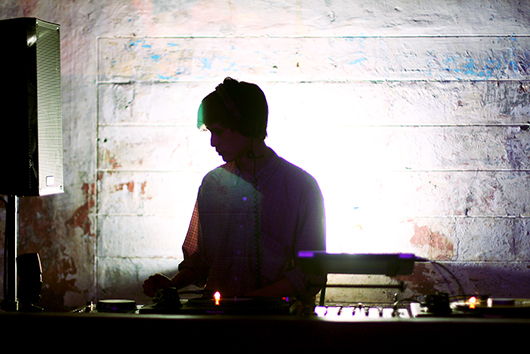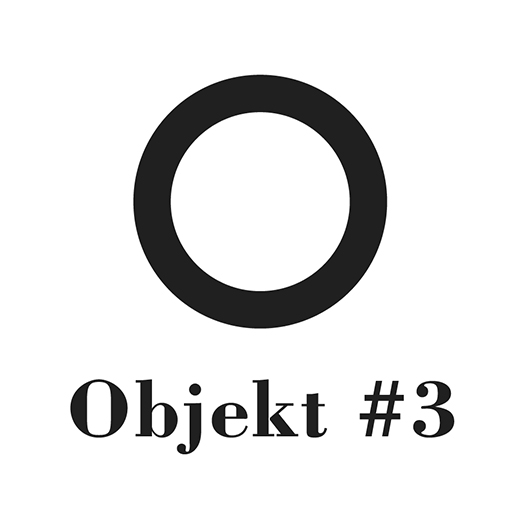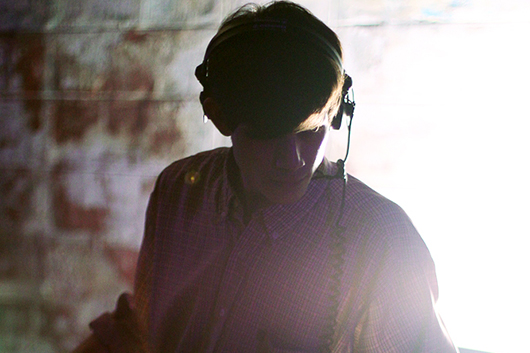Artist Tips – Objekt Offers Five Ways to Preserve Your Sanity and Make Your Tracks Sound Better in the Process
Though he’s only released a handful of 12″s, Objekt (a.k.a. TJ Hertz) is an artist […]

Though he’s only released a handful of 12″s, Objekt (a.k.a. TJ Hertz) is an artist who’s garnered an impressive level of respect over the past few years, particularly amongst his peers. On the one hand, this is due to the fact that the Berlin-based techno producer makes great tunes; his self-titled, white-label releases caused quite a stir when they dropped in 2011, and 2012’s “Cactus” b/w “Porcupine” record for the venerable Hessle Audio admirably flipped dubstep on its head while offering something truly unique. Still, the strength of Objekt’s music goes beyond his ability to innovate; his tracks also sound impeccable. Some of this engineering prowess can undoubtedly be linked to his time working at Native Instuments as a developer/programmer, but it’s also clear that Hertz employs an intense level of attention to detail. Next week, he’ll be releasing Objekt #3, a two-track outing that marks the reignition of his white-label series. As expected, the tunes sound great, so we figured that we’d ask Hertz to share a bit of his production knowledge with our audience. What follows are five nuanced, practical, and thorough pieces of advice that should help make any producer’s tunes sound better.

Monitoring level makes a difference.
Everything sounds better loud. There are a number of legitimate reasons for this—the frequency response of your ear changes depending on the listening volume, as well as the dynamic response (your auditory system acts almost like a compressor at high volumes)—but a common result is that producers tend to monitor louder and louder over the course of a session, thinking their track is sounding better and better, or they cut out the bullshit and monitor at an earsplitting volume from the very beginning. While it is important to know how your productions will sound at different volume levels (especially if you’re producing music destined for club play), listening at a relatively low volume is a far, far more critical test of how your mixdown is sounding than seeing how hard it bangs when you turn it up. Just about anything will bang if you turn it up. I’ve noticed that late-night sessions at a punishing volume (which I’m totally feeling at the time) tend to be the ones where I’ll revisit the project the next day and think it sounds like total shit. The bottom line is that it’s very easy to subconsciously compensate for a track sounding “not quite there” by turning up the volume, and in my opinion, this is a bad practice to get into.
Be strict when it comes to gain staging.
Sensible gain staging—setting an appropriate signal level at each point in the signal chain—is very important, but there are two separate issues here. The first is that it’s very important to maintain the same perceived level at every point in an FX chain. Put simply, when you bypass any plug-in, the perceived volume level should remain the same. This relates to my point about monitoring volume above and is critically important because it’s the only way you can fairly assess whether the effect/compressor/EQ you just inserted is really improving the sound of the channel, or whether it’s just making it louder. If, for example, when you bypass the compressor, the perceived volume drops by 6 dB (or even 1 dB—it makes a difference), then of course you’ll think your kick sounds more banging when it’s compressed. But if you set the output level of your compressor properly, you might realize that actually the compression is squashing all the life out of the input signal, and the only reason it sounded “better” was because the compressor was boosting the output volume.
The second thing is that in general it’s a good idea to run your DAW’s signal chain at around -12 to 0 dB (pre-fader). There’s a ton of misinformation out there about why this is the case—digital clipping, for example, is not really something you have to worry about in any modern DAW as long as you’re not clipping the outputs or inputs of your audio interface. Nonetheless, it’s still good practice to keep your signal levels modest, largely because it keeps your session tidier and allows you to better see where you’re at on the meters (which are most informative when they’re not redlining, duh). The same principle applies to analog mixers too (although there’s a tradeoff here against raising the noise floor, so usually you’d run the meters hotter on an analog desk). Moreover, certain mixers behave differently when it comes to soloing channels—my Tascam, for example, bypasses the master fader when a solo is active, meaning that if you’re running all the channels too hot and compensating by pulling the master fader down, then you get an artificially loud level when you want to audition a particular channel. To me, that’s one more reason to keep the master fader at 0 dB while keeping all the channels at sensible levels.

Never start tweaking without having an A/B comparison ready.
We’ve all been there: you decide that your drums need some reworking and set about trying to make them punchier and fatter and happier and more productive or whatever. At first you know what to do—the kick needs a little more attack, the snare is too thin, whatever, so you fix that. And lo, now the kick doth cut and the snare doth punch. But then you keep tweaking. And tweaking. And three hours later, you’ve changed pretty much every parameter in every FX chain and you think everything probably (might?) sounds better than when you started, but you’re not sure. So you listen to your last bounce and lo and behold, it turns out you’ve made it sound worse than before. Or, worse still, you didn’t Save As before you started tweaking, and now you don’t even remember how it sounded before at all.
Adjusting mixdowns like this is an incremental process and it’s incredibly difficult to keep sight of where you started and where you want to go when you’re listening to the same sound for literally hours on end. It’s therefore incredibly important, whenever you embark on such a tweaking odyssey, to save a new version of your project, bounce the track (or better still, the solo part) how it currently sounds, load this bounced track into a dry channel in your DAW (careful not to have it running through any plugins on the master bus) and constantly A/B between your new version and the old by soloing the old bounce (at the exact same perceived level, of course—make sure your master level is at 0 dB!). I try to follow this rule religiously when making mixdown adjustments and almost always regret it when I don’t.
Treat your room.
If you ever get the chance to attend a mastering session of one of your own tracks at a reputable mastering studio, do it. Chances are, you’ll hear a ton of obscure frequency peaks and nasties within your mixdown that you never heard at home. Part of this is of course due to the €30000 that the mastering house probably spent on its monitors, but the monitors are actually less important than you might think. Listening to music in a properly acoustically treated room is like looking at a painting wearing the right glasses for the first time: you see things clearly that were simply a blur before. Better monitors can help, but only in the sense that they give you a finer brush with which to paint—a fine brush is no use if you can’t see what you’re painting.

The mixdown is the least important part.
While there is a lot of merit in taking pains to make sure your mixdown is as perfect as can be—especially if you’re producing music for big soundsystems—a tight mixdown will never rescue a mediocre track. I would go so far as to say that the mixdown itself is the least important part of the production process; given great ideas, melodies, arrangement, instrumentation, and flow, a few out-of-whack levels and frequencies won’t actually cripple the end result all that much. If you’re tweaking a mix for hours and struggling to get things sounding right, consider that it might not be the mixdown itself at fault. Don’t be afraid to replace or discard channels or elements that don’t quite fit, no matter how long you spent getting them to where they are.

